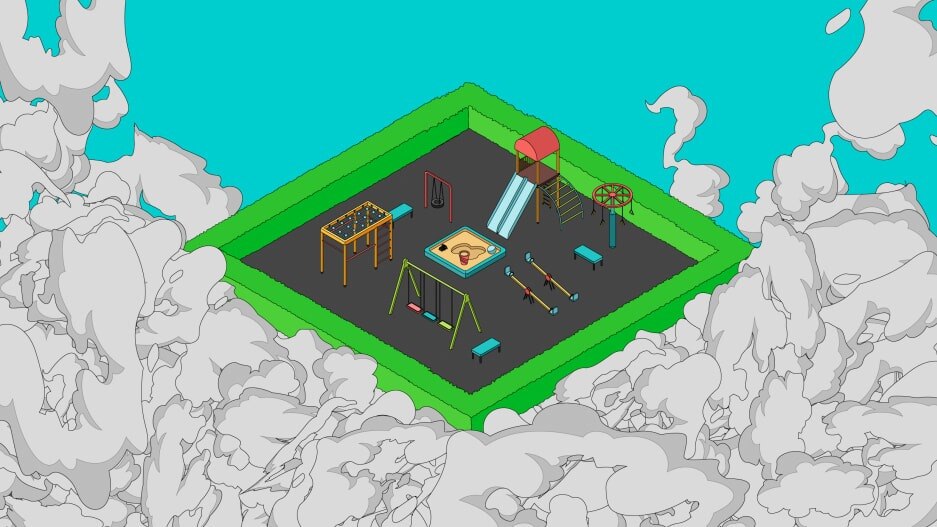- | 8:30 am
To reduce air pollution in a park by 50%, just plant some simple hedges
Slash outdoor pollution with this one weird trick.

Cars pollute. It’s a well-known reality that, in the abstract, imperils our climate and ravages our atmosphere. But for individual humans down on the street level next to the cars and trucks rushing by, this pollution is much more concrete. Particulate matter from exhaust pipes, brake pads, worn tires and the dust-covered asphalt poses an immediate health threat to those close by, lodging nano-scale particles permanently in the lungs and causing cardiovascular, respiratory and neurological health problems that can be lifelong.
An experimental new approach could cut this local level car pollution in half. All it requires is some carefully planted western red cedar.
The concept is fairly simple: planting certain species of plants near pollution-heavy roadways can act as a physical filter to trap harmful particulate matter before it spreads out into the air we breathe. To prove this concept, researchers from Lancaster University in the U.K. partnered with three schools in the city of Manchester to install plants alongside playgrounds situated near heavily used streets. They used three different species of tree-like hedges (or “tredges”) and measured particulate matter pollution on either side over time. After a few months, the plantings showed remarkable results, reducing pollution on the playground side by up to 50%.
“It’s relatively simple and it’s relatively fast and it’s relatively cost effective,” says Barbara Maher, a professor emerita at Lancaster University, who studies particulate pollutants. Maher led this research, which was recently published in the journal Scientific Reports, and worked with local primary schools in known traffic pollution hotspots. “When you go and stand amongst these children, they’re aged four to 10 or 11, they’re tiny. And the amount of traffic related particulate pollution they’re being exposed to in the playground is extremely high,” she says.
Plants do a surprisingly good job of capturing that pollution before it gets to those tiny lungs. “Some of it almost immediately can bump into the leaves of the tredges and therefore get deposited on them and taken out of the atmosphere before they get dispersed,” Maher says. “Leaves have got characteristics that make them very effective at capturing particulates form the air, whether it’s hairy leaves or very irregular surfaces or sticky leaves, or many, many small leaves.”
Maher and her collaborators studied the effectiveness of three different plantings, including an ivy screen, a tredge with a mix of western red cedar or Swedish birch and an inner juniper hedge, and a tredge of just western red cedar. Compared to a control site with no intervention, these plantings reduced average playground-side pollution between 13% and more than 49%. The western red cedar was found to be the most effective. “The reason the western red cedar works so well is it has lots of tiny leaves that are very rough, very scaly,” Maher says.
Maher had previously studied similar pollution reductions using deciduous species. This study, which uses evergreen species pre-tested in a wind tunnel environment, offers potential solutions for year-round site-specific pollution reduction.
The tredges planted in this experiment showed strong pollution reductions over time as well as during spikes in pollution, such as when a large diesel truck passes by. “One of the things that the tredges did spectacularly well was to reduce their number and magnitude,” Maher says. “On the other side of the tredge you don’t see a number of those spikes.”
For the plants gathering up all this particulate matter, being a sponge for pollution isn’t much of a problem. The study showed that plants were unlikely to absorb the pollution in any damaging way, and that simply spraying them down with water occasionally would clear off any dusty appearance (without causing more air pollution). More study is needed to determine whether there is a limit for how much particulate matter a plant’s leaves can absorb before they’re no longer effective filters.
These findings suggest a simple and replicable solution for reducing particulate matter in sensitive spaces. Maher says that for school in socioeconomically challenged areas, playground are often directly adjacent to busy roads, putting young lungs at great risk. Specific plantings — western red cedars, about three feet apart, and trimmed to about six feet high–can create an effective screen. But she’s careful to note this shouldn’t be seen as a blanket prescription for cutting pollution citywide.
“We’re not saying plant millions of trees all over the city and they’ll take 50% of particulates out,” she says. “We’re saying at the local roadside scale, next to these school playgrounds that are very badly affected by traffic pollution, we can make that much difference at that scale.”
She says other plant species may do better in different environments, and more study is needed to better understand if and how targeted plantings can create broader pollution reductions. But for now, she says this study’s findings can be put into action immediately.
“Hopefully there’s enough specific information in there that people who know about plants as well as people who know where the hotspots are and where people need to be protected can say these are the basic fundamental requirements for a tredge to work well,” she says. The next step, she says, is “to begin to design those installations at the places where they’re going to make a difference.”





































